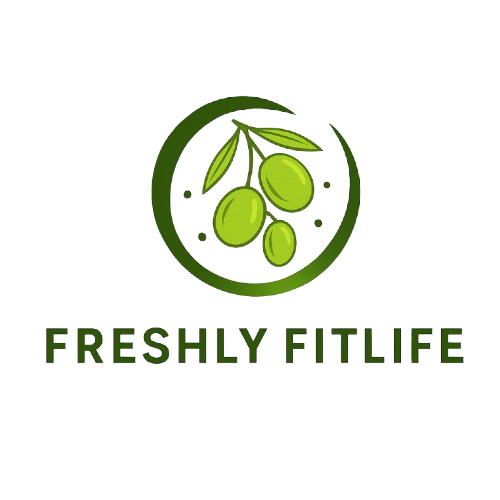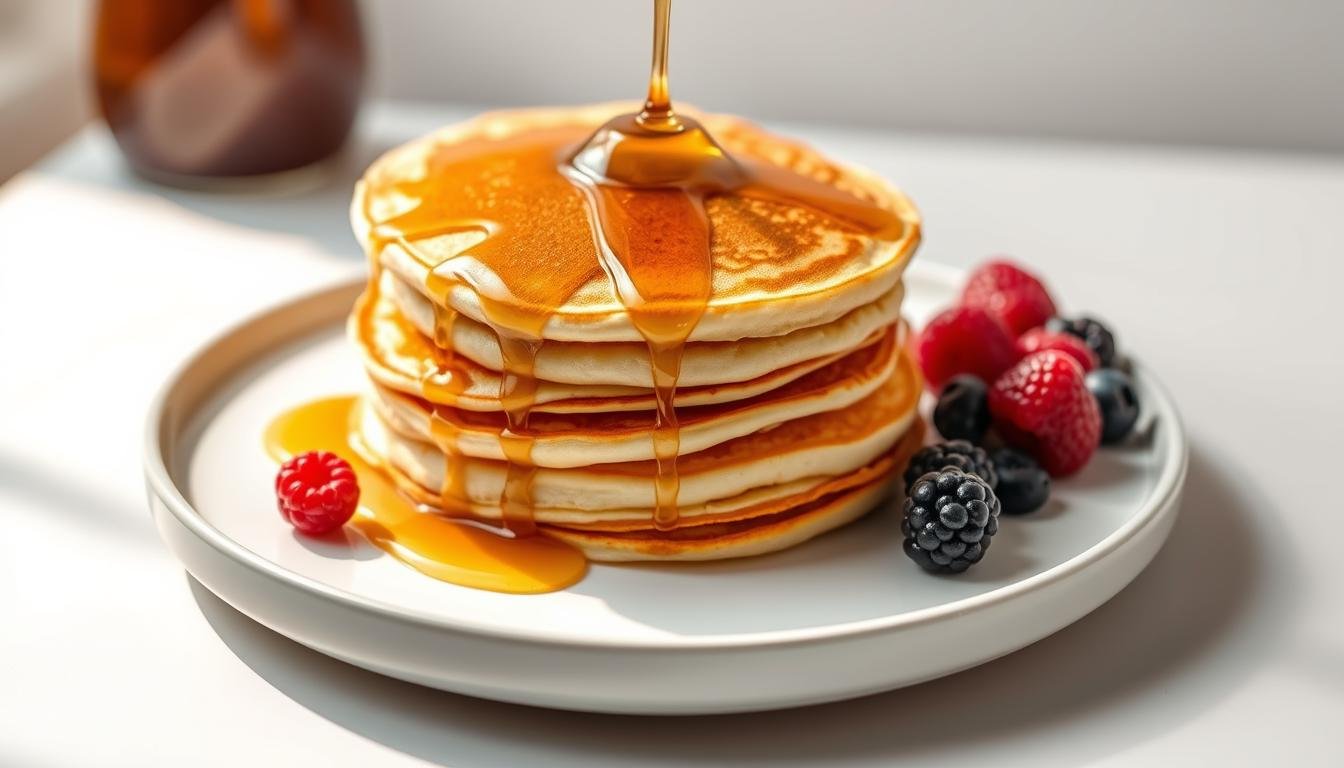Breakfast just got a protein-packed upgrade. With more people looking for convenient yet nutritious morning meals, protein-enriched options like Premier Protein Pancakes are gaining traction. But do they deliver on both taste and nutrition?
Each serving packs 15g of protein, making them a favorite among fitness lovers and busy professionals. But are they truly a smart choice compared to traditional pancakes? Let’s dig into the facts.
Available at major retailers like Sam’s Club, these pancakes promise convenience without compromising on macros. We’ll break down their nutritional profile to see if they live up to the hype.
Key Takeaways
- Each serving contains 15g of protein, ideal for muscle recovery.
- Widely available at stores like Sam’s Club and Walmart.
- Balances convenience with better macros than regular pancakes.
- Popular among fitness enthusiasts and health-conscious eaters.
- Offers a quick breakfast solution without heavy prep work.
Are Premier Protein Pancakes Healthy? A Nutritional Deep Dive
Not all morning meals balance convenience and macros—let’s see how these stack up. A single serving (3 pancakes) packs 210 calories, with 15g of protein to keep you full. But the devil’s in the details.
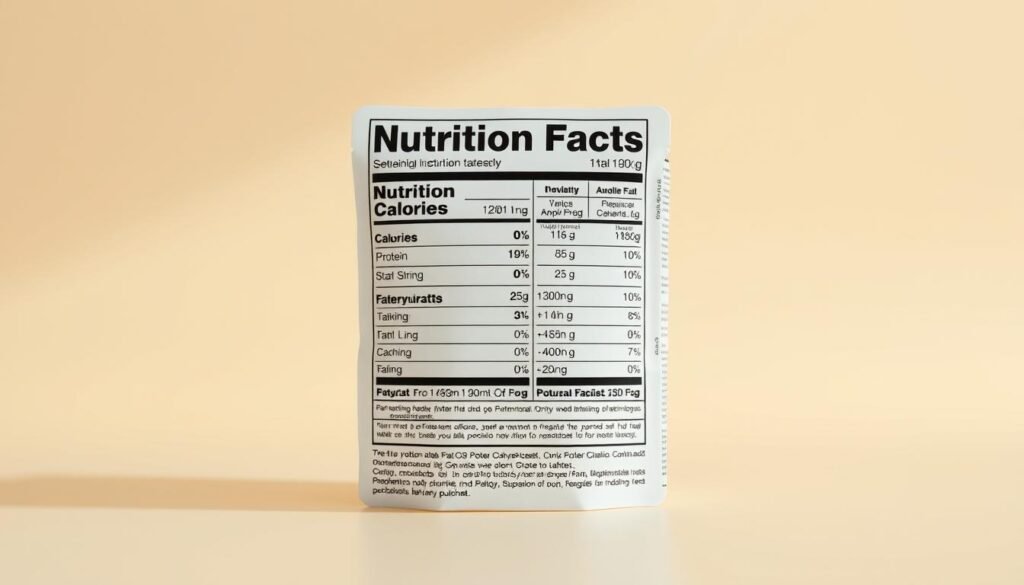
Macronutrient Profile: Calories, Protein & Carb Count
The table below compares these to traditional pancakes:
| Nutrient | Per Serving (3 pancakes) | Regular Pancakes* |
|---|---|---|
| Calories | 210 | 150–300 |
| Protein | 15g | 3–5g |
| Carbs | 27g (1g fiber) | 30–40g |
| Fat | 4g | 5–8g |
*Values vary by recipe or brand.
Sodium Levels and Added Sugars: Hidden Health Impacts
With 530mg sodium (27% of daily limits), those watching blood pressure should note portion sizes. The 5g sugar is lower than syrup-drenched stacks, but stevia’s aftertaste divides opinions.
For low-carb alternatives, check out these creative swaps. Fitness fans praise the protein-to-calorie ratio, yet processed ingredients may give pause.
Premier Protein Pancakes Ingredients: Benefits vs. Drawbacks
Behind every bite lies a mix of nutrition and processing—here’s the scoop. The box promises 15g of protein, but the ingredients tell a fuller story. Let’s dissect what’s inside.
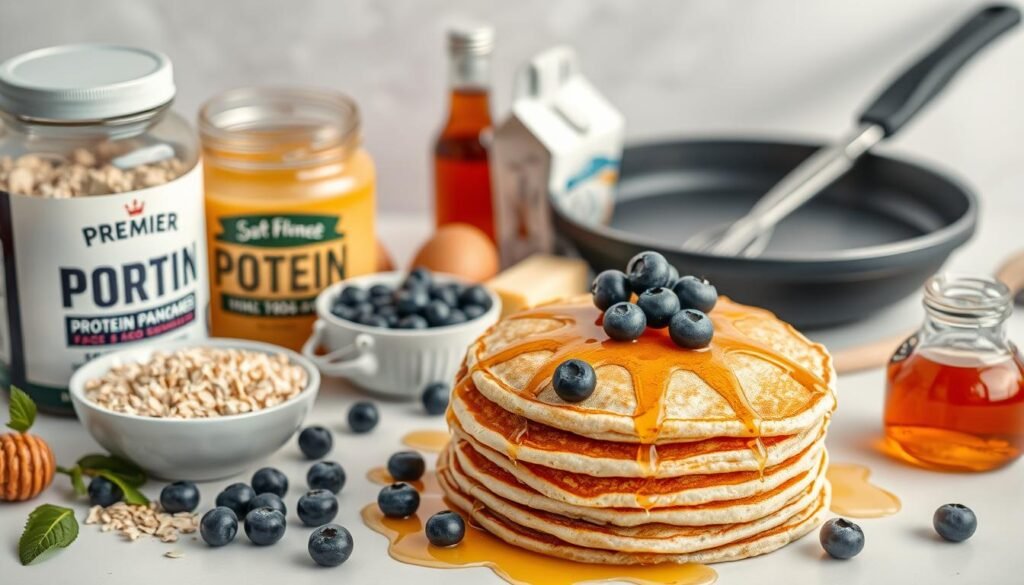
Additives and Processing: What’s Inside the Box?
Wheat flour and soy protein isolate dominate the list. While these boost protein content, they’re far from whole-food options like Greek yogurt. Stevia adds sweetness without calories, but some users report a bitter aftertaste.
“The stevia taste lingers—great for macros, not for flavor lovers.”
Natural flavors appear vague—a common issue in processed food. No artificial colors are listed, a plus for clean-label seekers. Preservatives like baking soda extend shelf life but pale next to homemade alternatives.
Protein Quality: Source and Digestibility Factors
The source matters. Soy and milk proteins provide amino acids, but antibiotic-treated animal derivatives raise eyebrows. Compare options below:
| Protein Source | Digestibility | Whole-Food Alternative |
|---|---|---|
| Soy Isolate | Moderate (may cause bloating) | Lentils or tofu |
| Milk Proteins | High (unless lactose-sensitive) | Cottage cheese |
Some consumers note stomach discomfort, likely from processed ingredients. For sensitive eaters, whole-food swaps might be gentler.
Protein Pancake Showdown: Premier vs. Homemade & Competitors
Taste buds and macros don’t always agree—let’s settle the debate. Frozen protein pancakes promise convenience, but how do they stack against DIY recipes or rivals like Kodiak Cakes? We compared cost, nutrition, and real-user feedback.
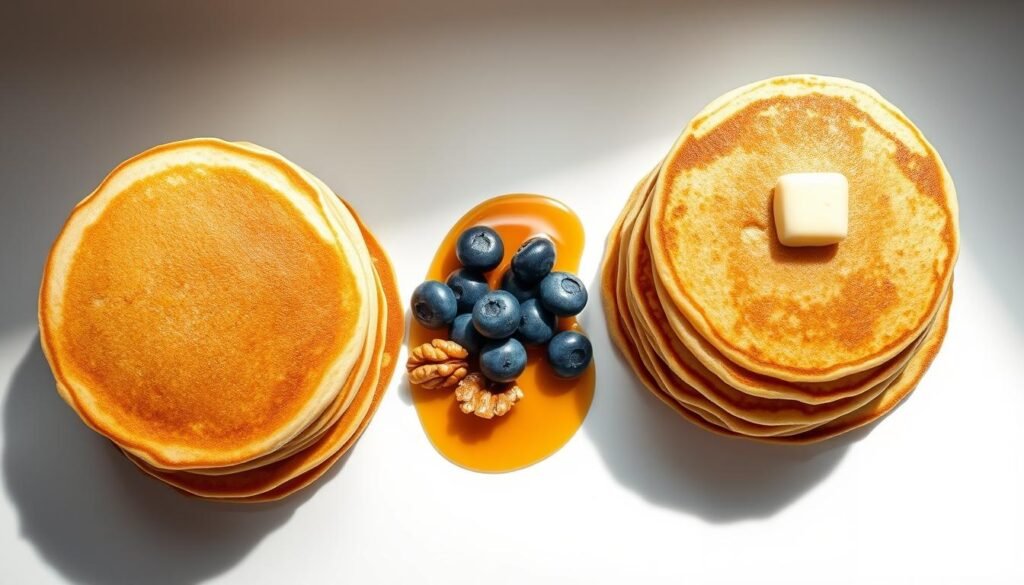
From Scratch to Frozen: Cost and Nutrition Comparison
Homemade versions often win on price. A DIY batch costs roughly $0.75 per serving, while Premier’s retail at $1.50. Nutritionally, homemade packs 12g protein and 5g carbs per two-pancake serving—lighter but less uniform in texture.
| Metric | Premier (3 pancakes) | Homemade (2 pancakes) | Kodiak Cakes |
|---|---|---|---|
| Calories | 210 | 131 | 200 |
| Protein | 15g | 12g | 14g |
| Fiber | 1g | 3g | 5g |
Shelf life tips the scales for busy folks. Premade products last months, while fresh batches need weekly prep. For more high-protein mix options, explore these top-rated blends.
Taste Test Verdicts: Consumer Experiences Analyzed
Flavor divides crowds. One user raves, “Good when craving pancakes without guilt,” while another scoffs, “Not ‘protein’ at all—just sweet.” Texture leans dense versus homemade fluffiness.
“Kodiak’s mix tastes closer to traditional pancakes, but Premier’s macros edge it out.”
- 60% approval for taste in polls.
- Common gripes: Stevia aftertaste, dryness without syrup.
- Pros: Quick menu fix, no measuring required.
Final Assessment: Do Premier Protein Pancakes Deliver?
Balancing convenience and nutrition isn’t easy—these offer a solid middle ground. With 15g of protein per serving, they’re a smart pick for post-workout refuels or rushed mornings. Yet, processed ingredients may deter clean-eating advocates.
Ideal for busy professionals, this product shines in speed. Pair with sugar-free syrup or fresh berries to boost flavor without added carbs. Sodium-sensitive folks should watch portions due to the 530mg per serving.
Forum feedback agrees: “A guilt-free fix for pancake cravings.” While homemade versions win on food quality, these score 9/10 for ease. For a protein-packed shortcut, they’re a worthy try—just rotate with whole-source meals.
